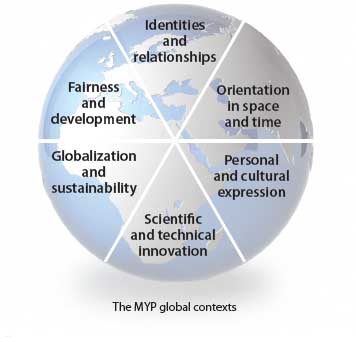MYP Mathematics - an integrated approach

Support from Rachel Poirier
The MYP and integrated mathematics
They go together like two peas in a pod. Why? Because the MYP mathematics framework and an integrated approach to math instruction both emphasize conceptual understanding and constructing meaning from the powerful universal language of mathematics.
And, although integrated math instruction existed well before the Common Core State Standards for Mathematics (CCSSM), this integrated, or blended approach reflects the focus of both the CCSSM and the MYP. It makes connections across mathematical fields, reinforces concepts over time, and emphasizes an understanding of mathematical principles over procedure and isolated skill manipulation.
Essentially, the transformation from a discrete to an integrated approach represents a shift from “how” we engage our students with mathematics to “why” we engage our students with mathematics. But what does this look like in practice—particularly within the context of the MYP?
The MYP concepts as your starting point
Both key and related MYP concepts can provide a valuable foundation for any curricular realignment. Ask yourself: what concepts offer opportunities for integrated exploration within the units of study for my course?
| Aesthetics | Change | Communication | Communities |
| Connections | Creativity | Culture | Development |
| Form | Global Interactions | Identity | Logic |
| Perspective | Relationships | Systems | Time, place and Space |
The MYP key concepts
Not only are concepts enduring and unifying, they provide the means by which we can inform units of study. They help to coordinate teaching and learning, while enabling complex exploration of the essence of mathematics as we organize and relate facts and themes.
For example, based on the key concept of relationships and the related concepts of measurement and representation, a Year 5 MYP integrated math unit might include a blend of topics within the areas of:
- Algebra (linear functions)
- Geometry (plotting linear functions on the Cartesian Plane)
- Statistics and Probability (accuracy, correlation, regression)
Learning within the unit would illustrate that the slope of the line of best fit is related to the correlation between the dependent and independent variables, so that the accuracy of linear regression models can be calculated. A possible summative assessment task might ask students to create a portfolio of examples showing how regression models are applied to make predictions in real-world situations (assessed against criterion D).
|
Connect units with global contexts Another way to explore the transition from a discrete to a blended approach is through the global contexts. Ask yourself: how are topics within my units related, why do they matter, and what is their authentic relevance and significance? While concepts are powerful ideas with broad applications, contexts can offer the possibility of new perspectives and refine understanding. For example, based on the global context of orientation in space and time, a Year 5 MYP integrated math unit might again include a blend of topics within the areas listed above, but be contextualized by an exploration of scale, duration, frequency, and/or variability. In addition to a unit test that asks students to demonstrate their knowledge and understanding of the content studied (assessed against criterion A), another task might ask students to explore different mechanisms for measuring time, growth, profits, or patterns in nature (assessed against criterion D). |
 |
Promote math as a universal language
Any integrated math course should stress the essential role of mathematics within society and the idea of mathematics as a universal language. It should also promote analytical reasoning and problem-solving skills that contribute to the development of logical, abstract, and critical thinking. Ideally, the study of mathematics should expand beyond a focus on achieving the “right” answer and instead inspire students to be active inquirers into relationships and applications.
Transitioning from discrete to an integrated approach using the MYP framework can help students view mathematics as a language of modelling and problem-solving with direct applications to the world outside the classroom.
Transition to an integrated approach
MYP Mathematics
Resources structured by related concept, helping you effectively shift to an integrated approach.
Search results
|
Series 
|
Oxford English: An International ApproachA truly international 11-16 English programme |
© 2024 Oxford University Press. All rights reserved.


